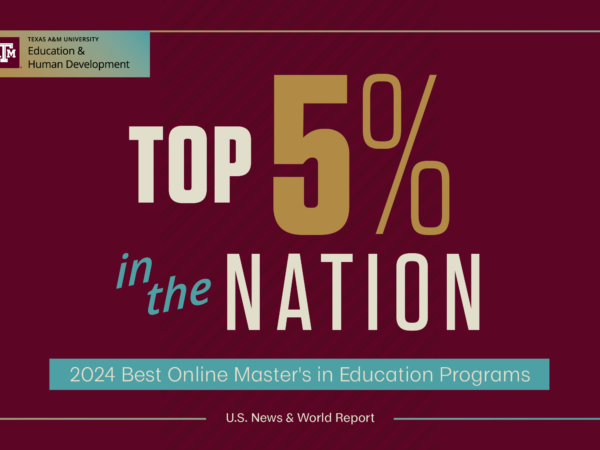Technology’s Impact On Learning A Foreign Language
As the number of classrooms focused on technology-infused learning grows, faculty across the College of Education and Human Development are capitalizing on that growth.
Dr. Fuhui Tong, professor and bilingual education division chair, has been working at a school in Bryan for the last nine years on a Chinese enrichment program. A recent extension of the program involved testing the effects of E-flashcards on Chinese vocabulary learning.
Little research exists on how iPads can be used to assist with learning Chinese as a foreign language, especially at the elementary level. Tong and her former graduate student, Dr. Jui-Teng Li, were specifically interested in the use of E-flashcards for learning Chinese as a second/foreign language.
“The whole idea is to incorporate technology to help students to better learn a foreign language, which is more challenging than their native language,” explained Tong. “We believed that with a dual-coding approach, plus audio support, students can learn the language in a more efficient way.”
100 fourth and fifth grade, English-speaking students, participated in two groups – one with E-flashcards and one with traditional paper flashcards. The objective was to learn 20 new Chinese words during each lesson.
E-flashcards were made and saved on each student’s iPad containing verbal, visual and audio cues. Paper flashcards were also made containing the same verbal and visual cues, but without audio support.
“Because 80 to 90 percent of Chinese words are phono-semantic compounds that present both sound and meaning, it is critical for learners to be exposed to verbal representation, visual image and audio input. This can be achieved by utilizing technology.”
After conducting pre-, post- and one-week delayed tests on reading and listening, researchers found students who used E-flashcards statistically outperformed those who use paper flashcards. Tong credits that to the fact that students paid more attention to Chinese word learning when technology is involved.
The findings can be explained by the Cognitive Theory of Multimedia Learning. Research has shown that people learn better with a combination of words and pictures than just pictures alone. However, according to the theory, simply adding words to pictures is not an effective way to achieve multimedia learning. It is key to focus on how the human mind works in order to find a meaningful learning experience.
Other impacts of E-flashcards
Aside from increased test scores, Tong and the research team also examined the impact of both types of flashcards on learning attitudes toward learning Chinese. They found attitudes toward word learning were enhanced for students who used E-flashcards.
“We also found that students who were exposed to that particular approach were more confident and motivated in learning the Chinese language compared to the other group of students who were exposed to the traditional flashcards.”
The students demonstrated higher levels of attention, relevance, confidence and satisfaction in Chinese word learning. Tong said the reasoning is that the multiple features of E-flashcards were more engaging and helped to meet students’ learning needs.
Tong pointed to recommendations on the future use of E-flashcards when learning a foreign language, such as Chinese. Chinese language teachers can incorporate E-flashcards in their lesson plans, focusing on a selected group of words and creating E-flashcards for their students.
They can also use the strategy for homework. Teachers can require students to use their iPad to make their own E-flashcards by recording their voice saying the word. It gives students a chance to review and reinforce their learning of the target words.
“Teachers can also use this as an assessment tool. They have the ability to give the student a word without any of the additional support and ask the student to pronounce and give the meaning of that character,” explained Tong.
You can read more about the research in Reading and Writing.
About the Writer
Ashley is the Media Relations Coordinator and responsible for news coverage in the Department of Teaching, Learning and Culture as well as the Department of Educational Psychology.
Articles by AshleyFor media inquiries, contact Ashley Green.
Fundraising
To learn more about how you can assist in fundraising, contact Amy Hurley, Director of Development ahurley@txamfoundation.com or 979-847-9455














